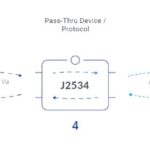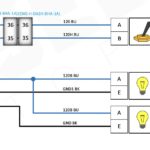My 2019 Peterbilt with a Cummins X15 efficiency series (450hp) and 950,000km has been experiencing intermittent starting and idling issues for the past month. The engine would start rough, with fluctuating RPMs and unresponsive fuel pedal, almost like a derate condition. Restarting sometimes helped, but the problem became increasingly frequent, culminating in a complete engine stall and tow to a Cummins shop.
Initial Diagnosis and Repair Attempts
The Cummins shop found no active engine codes, only inactive codes related to the VGT (Variable Geometry Turbocharger) actuator. They inspected the turbo and actuator, confirming functionality and voltage. The EGR cooler and valve were also checked and cleaned. Despite these efforts, the truck remained inoperable. Surprisingly, the next morning, it started and ran fine. As a precaution, the fuel filters were replaced, despite having only 13,000km on them. This resulted in a hefty bill but no solution.
The problem reappeared the very next morning. After several restart attempts, the engine finally ran normally. I drove to a Peterbilt dealership, noticing a consistently loud turbo spool sound during startup whenever the issue occurred. This abnormal sound seems to be a reliable indicator of impending problems. While a check engine light isn’t always present, the Peterbilt shop found an inactive code for the VGT actuator. They suspect the actuator needs replacement but haven’t yet completed a full diagnosis.
Focusing on the X15 Turbo Actuator
The recurring inactive VGT actuator codes, coupled with the loud turbo spool sound, strongly suggest the X15 Turbo Actuator is the root cause. A month prior, I received similar codes at key on/startup but was advised it could be a voltage issue affecting the ECM. Since no performance problems existed then, this was dismissed.
The VGT actuator controls the turbocharger vanes, adjusting boost pressure based on engine load and speed. A malfunctioning actuator can disrupt this precise control, leading to poor performance, rough idling, and even stalling. While the Cummins shop tested the actuator’s voltage, it’s possible internal mechanical or electronic issues were overlooked.
Further Troubleshooting Steps for the X15 Turbo Actuator
Before replacing the X15 turbo actuator, I recommend the Peterbilt mechanics perform the following:
-
Thorough VGT Actuator Diagnostics: Beyond voltage tests, a comprehensive diagnostic procedure should be followed. This may involve specialized software or tools to assess the actuator’s position sensor, control mechanism, and overall performance throughout its operating range.
-
Check for Wiring Harness Issues: Inspect the wiring harness connecting the actuator to the ECM for damage, corrosion, or loose connections. A faulty harness can disrupt communication and lead to erratic actuator behavior.
-
Inspect Turbocharger Vanes: Verify that the turbocharger vanes move freely and are not sticking or binding. Carbon buildup or damage to the vanes can hinder actuator operation.
-
Review ECM Calibration: Ensure the ECM has the latest software updates. Outdated calibrations may contribute to actuator control problems.
I’ve included videos demonstrating the engine’s behavior:
In the second video, the abnormal turbo sound is particularly noticeable. Note that the fluctuating RPMs are not due to pedal input; the engine is surging on its own.
Conclusion
Given the history of VGT actuator codes and the symptoms observed, a faulty X15 turbo actuator is the most likely culprit. While replacement may be necessary, a thorough diagnosis is crucial to confirm the problem and rule out other potential causes. This systematic approach will help avoid unnecessary repairs and ensure the truck is reliably back on the road.

